What it Sounds Like Inside the 2021 Olympics Venues
It’s mostly the sound of silence, with a few notable exceptions
Posted On: July 29, 2021 By :
What if you held an Olympic Games and no one came?
That’s not exactly the scenario in Tokyo, but it certainly feels that way. It’s not that people wouldn’t have come, of course. It’s that they weren’t allowed. Foreign spectators were banned months ago while Japanese residents learned weeks before the Games they wouldn’t be let in as the ultimate countermeasure against the spread of COVID-19.
So, what’s it like inside the venues where the world’s top athletes are competing on sport’s biggest stage in front of virtually no one?
For starters, it’s strange.
By far the largest contingent of people in any given venue at the Olympics in Tokyo are media. There are about 6,000 credentialed media at the Games and even they have restrictions on where they can go. At a typical Olympics, most venues are open to media with seating at desked tribunes on a first-come, first-served basis. This year, any media wanting to attend a particular event must first go through an online reservation system, which is new to the Olympic machine and another effort to limit how many people are in one venue at one time. Media can request up to 10 venues a day to visit and are told the night before whether they have been approved or not. At some venues, they are checking your confirmation email before letting you in. But at others, they don’t appear to be checking at all.
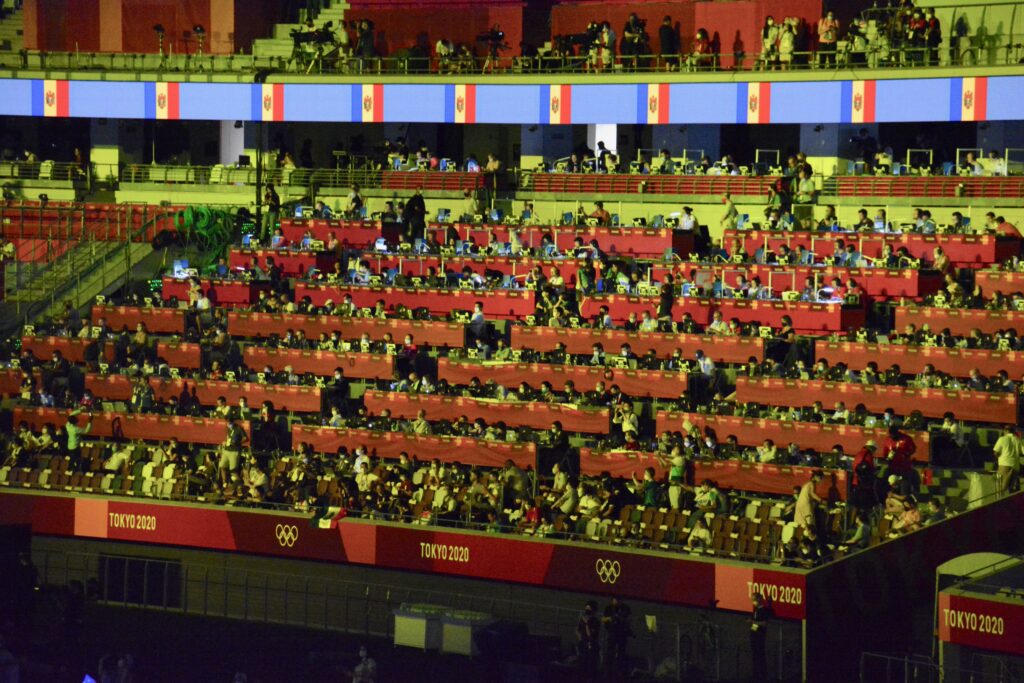
For events considered high-demand, however, tickets are issued to the media through their National Olympic Committees. The U.S. Olympic and Paralympic Committee, for example, has an assigned staffer in charge of doling out these tickets to U.S.-based media. For years that staffer has been Bill Hancock, the executive director of the College Football Playoff, who offers his time each Olympics to the USOPC specifically for this role.
High-demand tickets include the Opening and Closing ceremonies, all gymnastics, swimming and track-and-field finals and, interestingly, the final match in team handball, a sport that is wildly popular overseas but registers barely a blip in the United States.
Other than media, however, other people that you will see in the venues are primarily those associated with the international federation in that sport, or staff members of a national governing body attached with the athletes competing. A certain number of Tokyo 2020 volunteers have also been granted access to many of the venues, resigning themselves to the top rows and generally socially distancing themselves.
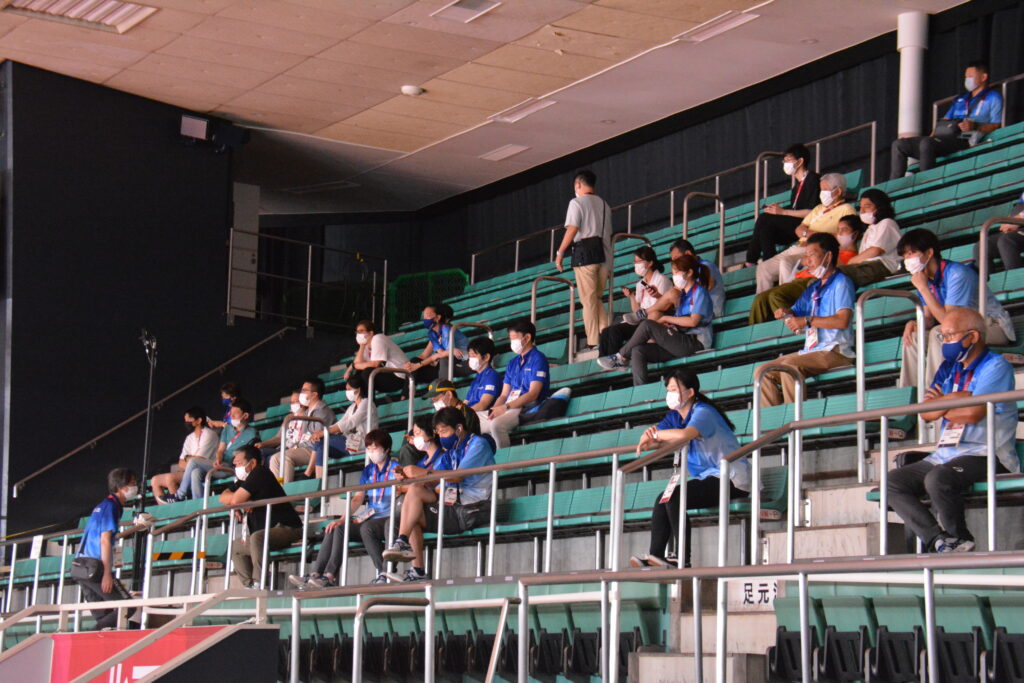
As for the atmosphere in house while the best in the world are doing what they do, it’s been a mixed bag depending on the sport or venue.
Sometimes the venues are quiet enough that all you can hear are the sounds of clicks coming from photographer’s cameras. But at other venues, there is still some noise to be had, even though it’s of course different than what you would imagine would be the case in normal times.
At the softball gold medal match, which USA Softball CEO Craig Cress noted would easily have sat 37,000 people, the only sounds you could hear were the teams themselves supporting their teammates in between plays. The players were loud and the echoing of their sound in the largely empty stadium was instantly noticeable. The sound of hearing those players yell their support had the feel of watching any youth tournament on a typical weekend despite it being the most important game in that sport in over a decade. But in a way, it was also a revelation as without the empty seats, you’d never know how much those teams were giving each other support.
At swimming, there is another dynamic – the other athletes not competing. Each finals round has included a decent-sized contingent of swimmers not competing that day, each seated in a section of the arena by country, rooting on their fellow swimmers. The spectator swimmers have been yelling, pounding thunder sticks or even bringing in horns of some kind, which I heard on two different sessions. It was the closest any event has come to feeling like a crowd was there.
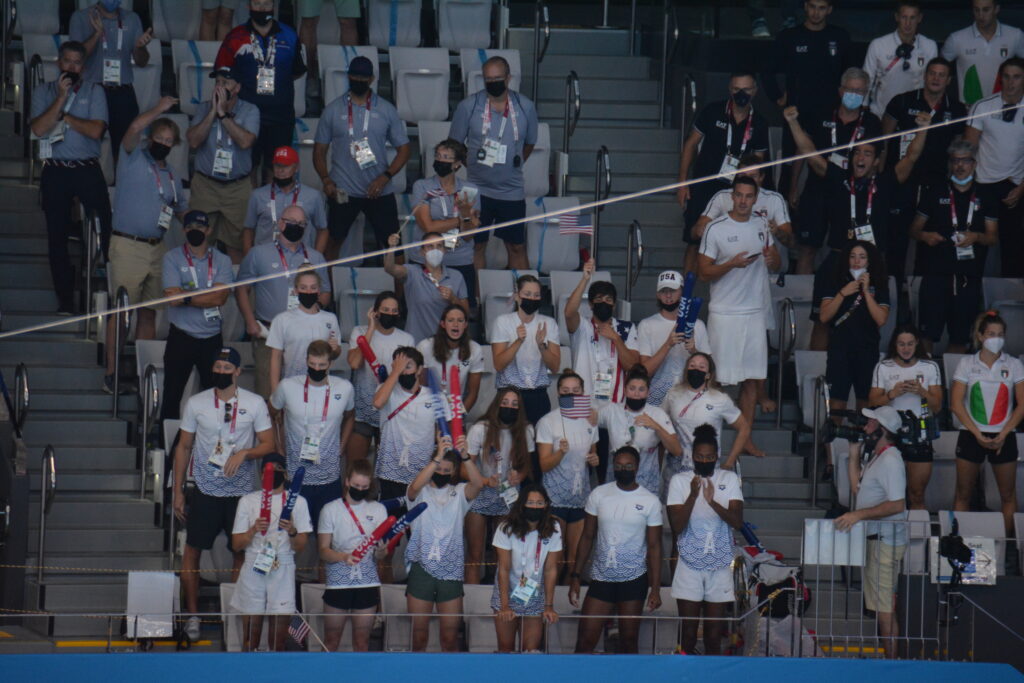
The judo competition was the only one I’ve been at that has made an attempt to pump in crowd noise. But even then it sounded as if the sound operators at the historic Budokan didn’t really trust that they should be doing it – you could barely hear the sound and after a minute of being in the venue it barely registered.
What’s perhaps been most interesting is that venues are rarely making an effort to bring remote fans into the building virtually. At 3v3 basketball, there was a total of 30 seconds where fans were shown on the screen in the types of virtual grids we became accustomed to seeing at U.S. event during the pandemic. This happened only briefly at a swimming finals I attended as well.
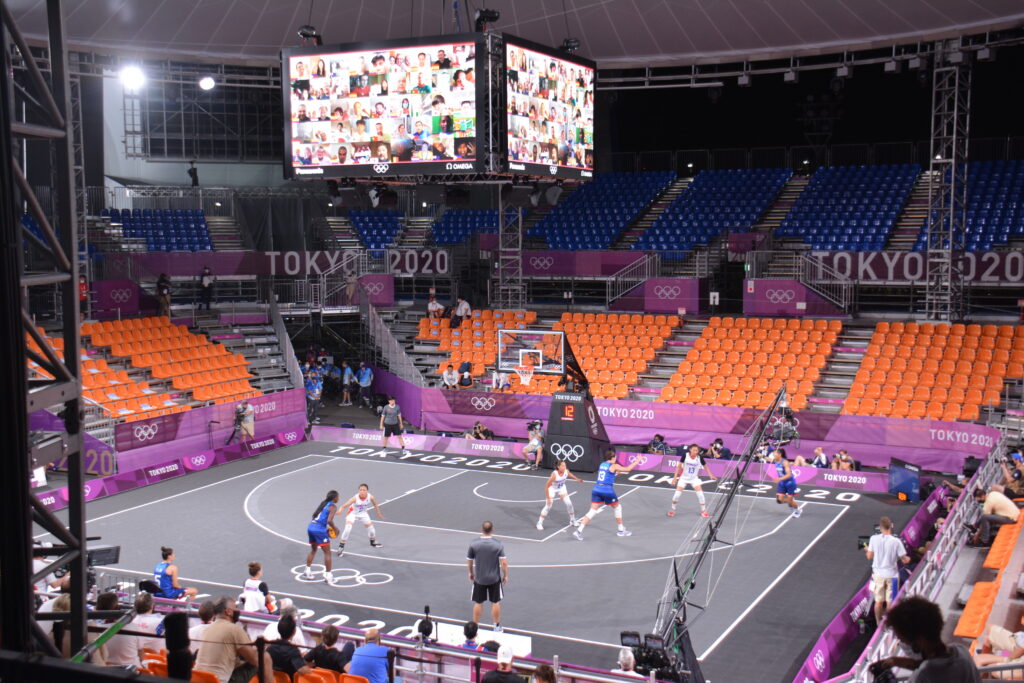
And then there was this guy from Uzbekistan during a boxing fight at Kokugikan Arena. I heard him the moment I walked in and I couldn’t believe it — he appeared to be an actual fan. Not only did he have two giant Uzbekistan flags that he was waving, he also had a snare drum that he was playing. It’s hard not to pick up the sound of a snare drum being hit in an empty venue, especially after a week of silence. How in the world did this guy get in here, I thought? Upon further inspection, he was actually part of the Uzbekistan boxing federation, which is why he was there.
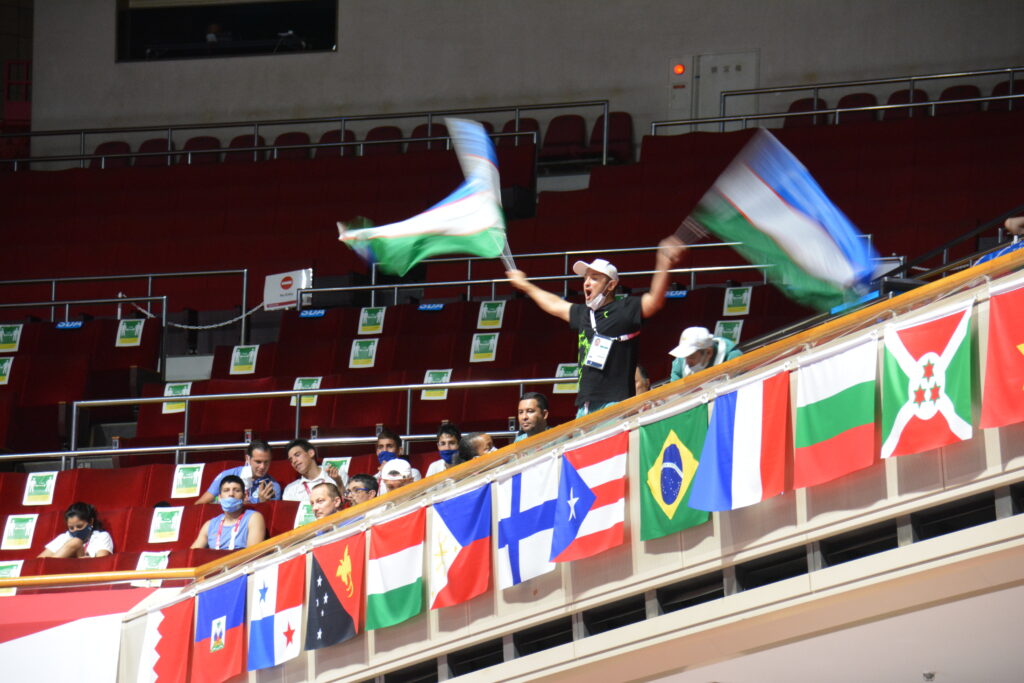
But the fact he cared enough to bring his own drum and wave his own flags was a refreshing moment to what otherwise has been an odd and quiet spectating experience.
Posted in: Olympic Sports, Paralympic Sports